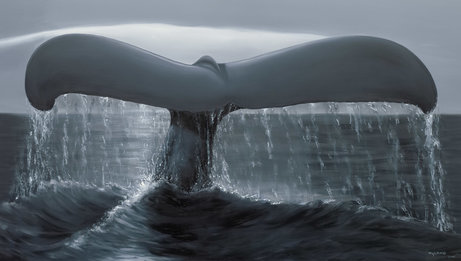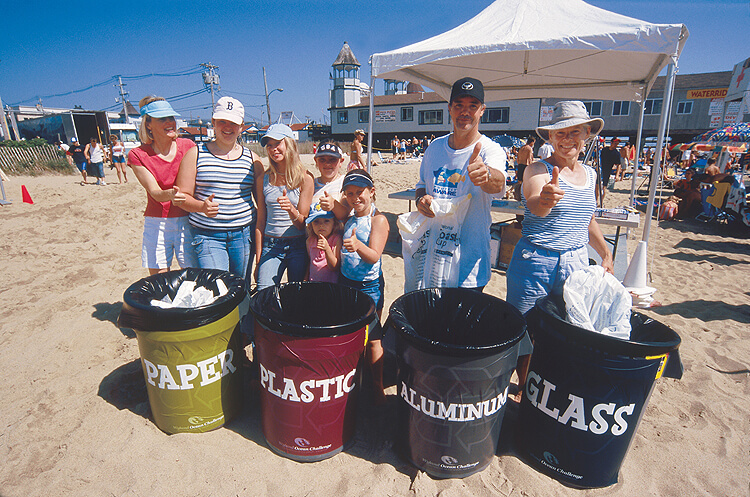Careers that make a difference
Former Vice President of the United States
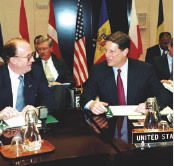
From Congressional speeches and election races to appearances on Saturday Night Live andorganizational conferences, Al Gore has campaigned for attention to the environmental needs of the blue planet. To uphold his environmental stance, Al Gore became an expert on global warming, the depletion of the ozone layer, the destruction of rain forests, and new earth-friendly technology. He even authored the best-selling book, Earth in the Balance: Ecology and the Human Spirit, in 1992.
About the same time his book was released, Al Gore was elected as Vice President of the United States beside President Clinton. Of their time in office together, President Clinton said: “From our inner cities to our pristine wild lands, we have worked hard to ensure that every American has a clean and healthy environment. We’ve rid hundreds of neighborhoods of toxic waste dumps and taken the most dramatic steps in a generation to clean the air we breathe … We have made record investments in science and technology to protect future generations from the threat of global warming. We’ve worked to protect and restore our most glorious natural resources, from the Florida Everglades to California’s redwoods.”
Executive Engineer for Advanced Technological Vehicles, Toyota
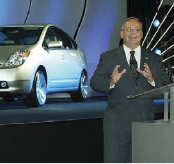 When you consider that Americans use their cars for 90 percent of their daily trips and that the average driver spends 443 hours a year behind the wheel, you can imagine the effect cars have on the planet. But environmental engineers like Dave Hermance are working hard to lessen any environmental impact these vehicles cause. Dave and his team at Toyota test advanced technologies like hybrid motors that use both gas and electric power sources to create cleaner, greener cars. “Hybrids offer many new advantages,” Dave says. “They improve air quality, use less fuel and therefore create less greenhouse gases and increase performance.”
When you consider that Americans use their cars for 90 percent of their daily trips and that the average driver spends 443 hours a year behind the wheel, you can imagine the effect cars have on the planet. But environmental engineers like Dave Hermance are working hard to lessen any environmental impact these vehicles cause. Dave and his team at Toyota test advanced technologies like hybrid motors that use both gas and electric power sources to create cleaner, greener cars. “Hybrids offer many new advantages,” Dave says. “They improve air quality, use less fuel and therefore create less greenhouse gases and increase performance.”
Dave helps communicate these advantages with the public and lawmakers who set higher standards for carmakers. “When I began my career in environmental engineering in the early 1970s, vehicle emission regulations were new,” Dave says. “I liked working with the new technology.” Today, he continues to make advances in environmental technology by combining his skills in math and science with his passion for the environment. “Work hard,” Dave advises students. “But work on something you love or it is only work.”
Organic Architect in San Francisco, CA
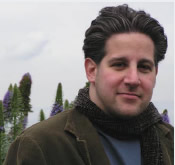 Most of us spend a good majority of our lives in buildings. But did you know that buildings use 40 percent of the world’s total energy, 25 percent of its wood harvest and 16 percent of its water? If we want to conserve our natural resources like water and energy, architects like Eric Corey Freed believe buildings would be a good place to start.
Most of us spend a good majority of our lives in buildings. But did you know that buildings use 40 percent of the world’s total energy, 25 percent of its wood harvest and 16 percent of its water? If we want to conserve our natural resources like water and energy, architects like Eric Corey Freed believe buildings would be a good place to start.
Eric and other green architects are finding ways to reduce the impact that buildings have on the planet. “I am an architect, and like most architects, I design buildings,” Eric explains. “The difference is that I look at all of the materials and systems that go into that building, and ask if this hurts our environment. We call this green architecture because it creates buildings that are friendly to the Earth.”
Eric uses his skills in art, science, sculpture, mathematics and psychology to create buildings and homes that connect to nature. Not only do his buildings help to preserve the planet’s resources, these nature-inspired designs use environmental elements like the light from the sun to add to the beauty of the house. “I was always interested in the environment,” Eric says. “As a child, I think I spent more time in the air climbing trees than I did on the ground! Nature was always an inspiration. My commitment to environmental design is a natural extension of this love.”
Eric urges students to examine how we build our world. “It is important to find something that makes the world a better place,” he says. “Changes happen when people start questioning things around them. So begin your questioning.”
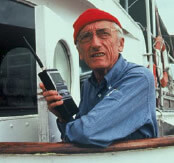 As a kid, he was expelled from high school for throwing rocks through the school’s windows. Who would have guessed that Jacques Cousteau would grow up to become the most famous undersea explorer in the world?
As a kid, he was expelled from high school for throwing rocks through the school’s windows. Who would have guessed that Jacques Cousteau would grow up to become the most famous undersea explorer in the world?
Today, Jacques-Yves Cousteau is remembered for his many books and films, his coinvention of the aqualung (an underwater breathing apparatus), his revolutionary underwater photography techniques, and his explorations aboard his treasured vessel, the Calypso. Though Jacques Cousteau’s philosophy was “the best way to observe a fish is to become a fish,” he enabled people of all continents to visit life under the sea through 30 years of television films including the series, The Undersea World of Jacques Cousteau.
In his later years, Cousteau was nicknamed “Captain Planet” for his devotion to awakening the public to environmental issues, and working with The Cousteau Society, which he founded in 1974 to further marine exploration and education. Jacques-Yves Cousteau was a man prized by a whole generation as an ecologist, conservationist, and protector of the Earth’s oceans. As a true admirer of Cousteau’s mission, marine life artist Wyland says, “It is now up to us to continue the message of Captain Cousteau and become the good stewards of the seas.”
Founder and Director of the Dolphin Communication Project
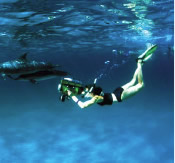 Not many people know more about the behaviors of dolphins than Kathleen Dudzinski, the founder and director of the Dolphin Communication Project in Mystic, Conn. Kathleen has devoted her career to researching communication and interaction between dolphins. Through her studies in Japan, Honduras, and the Bahamas, Kathleen has helped find the meaning of clicking signals and gestures that dolphins use to communicate with one another.
Not many people know more about the behaviors of dolphins than Kathleen Dudzinski, the founder and director of the Dolphin Communication Project in Mystic, Conn. Kathleen has devoted her career to researching communication and interaction between dolphins. Through her studies in Japan, Honduras, and the Bahamas, Kathleen has helped find the meaning of clicking signals and gestures that dolphins use to communicate with one another.
Although being in the water with the dolphins is cool, it is not Kathleen’s favorite part of her job – she calls herself a “wimp” when it comes to cold water. She enjoys analyzing hours and hours of data. “I love to see patterns become evident,” she says. “It is like a jigsaw puzzle that has lost its box. You don’t know what the final picture will look like, and have to put the pieces together to find out.”
Kathleen says she is lucky: “I get to study the ocean’s poster child. Everybody loves dolphins.” By bringing an understanding of dolphins to people around the world, she helps inspire people to become involved in ocean conservation. “People may protect the ocean to help the dolphins,” she says. “But by doing so, they help save all of the other amazing, but not-so-cute, creatures of the sea.”
Electric Film Works
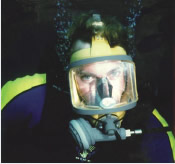 Filming animals underwater is not always easy. “If you are looking for killer whales, the sea will be full of dolphins,” says Kevin Juergensen, an underwater filmmaker. “You need that shot of the mola-mola eating jellyfish? The mola-mola will be there, but won’t touch any of the one million jellyfish swimming right by it.”
Filming animals underwater is not always easy. “If you are looking for killer whales, the sea will be full of dolphins,” says Kevin Juergensen, an underwater filmmaker. “You need that shot of the mola-mola eating jellyfish? The mola-mola will be there, but won’t touch any of the one million jellyfish swimming right by it.”
Sometimes Kevin has to go to extreme measures to get the footage he needs – like dumping 200 gallons of blood into the water to attract tiger sharks, then jumping over the side, all the while carrying about 50 pounds of raw meat on a rope to bring them closer. “With NO cage,” Kevin emphasizes, as if capturing the right shots of animals wasn’t challenging enough.
But making underwater films is not all fun and games. It’s more of a learning process, Kevin says. “Each documentary you produce is a lot like a term paper in high school. You start out knowing very little about the subject, but it catches your interest. Through all the research, interviews, and actually being there, you almost become an expert in the subject.”
Not only does Kevin help TV and film viewers see animals of the ocean face-to-face, he also enables divers to get closer to the animals in the water. His company, Juergensen Marine, makes SCUBA masks that don’t produce any bubbles. This makes observing, researching, and filming the animals much easier since sometimes the bubbles scare away interesting creatures.
Texas A&M University
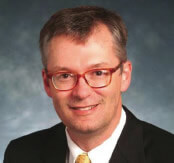 As people become more environmentally conscious, they understand that the preservation of clean air, water, and land is more important than saving a few dollars. As corporations get onboard with the “green movement,” they work with environmental accounts like L. Murphy Smith to make sure they are following all of the rules.
As people become more environmentally conscious, they understand that the preservation of clean air, water, and land is more important than saving a few dollars. As corporations get onboard with the “green movement,” they work with environmental accounts like L. Murphy Smith to make sure they are following all of the rules.
Environmental accountants help businesses follow government regulations like the Clean Water Act that help protect the planet. As a Professor of Accounting, Murphy teaches his students the importance of considering the environment when making business decisions. Not only will it benefit the planet, the companies may even make some money.
“Consider a career in accounting or auditing,” Murphy says. “You can play a key role in helping businesses achieve their financial goals and at the same time be socially responsible. In this way, you can help make the world a better place.”
Enviro Manufacturing Company in Oakey, Australia
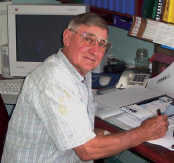 Have you ever thought about how much water is wasted while running the faucet waiting for hot water? Lloyd Linson-Smith took advice from his wife and set out to find a way to conserve this cold water. His answer – the Enviro Save Water System, which he invented to channel cold water that is ordinarily sent down the drain into a storage container to be reused later.
Have you ever thought about how much water is wasted while running the faucet waiting for hot water? Lloyd Linson-Smith took advice from his wife and set out to find a way to conserve this cold water. His answer – the Enviro Save Water System, which he invented to channel cold water that is ordinarily sent down the drain into a storage container to be reused later.
Lloyd uses the skills he developed through his work as a tool manufacturer and repairer to make his inventions possible. The Enviro Save Water System is not his only invention. In fact, Lloyd had so many great ideas he started two companies. “I started work at twelve and just kicked around until I was twenty-three,” Lloyd says. “An opportunity to progress at a rapid rate presented itself. Fortunately, I recognized it as my chance to zoom into the future.” At the age of 75, Lloyd looks back on “some wasted early years” but considers them as valuable experience for his inventions and success.
1907-1964
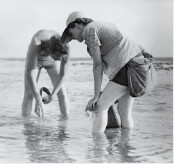 Rachel Carson has been credited with launching the modern environmental movement and named one of the 20th Century’s most influential people by Time Magazine. Silent Spring, her most famous book about the dangers of chemical pesticides, awakened the concern of Americans, including President John F. Kennedy, and triggered events that led to the creation of the Environmental Protection Agency and the elimination of DDT (a harmful pesticide). “The more I learned about the use of pesticides, the more appalled I became,” Carson recalled. “What I discovered was that everything which meant most to me as a naturalist was being threatened, and that nothing I could do would be more important.”
Rachel Carson has been credited with launching the modern environmental movement and named one of the 20th Century’s most influential people by Time Magazine. Silent Spring, her most famous book about the dangers of chemical pesticides, awakened the concern of Americans, including President John F. Kennedy, and triggered events that led to the creation of the Environmental Protection Agency and the elimination of DDT (a harmful pesticide). “The more I learned about the use of pesticides, the more appalled I became,” Carson recalled. “What I discovered was that everything which meant most to me as a naturalist was being threatened, and that nothing I could do would be more important.”
Her love for birds and the outdoors inspired Rachel to write about her passion – nature. She began her writing career at the age of 10 when she was published in a children’s magazine. After studying zoology and marine ecology, Rachel developed her writing skills by writing scripts for radio and as the Editor-in-Chief for the U.S. Fish and Wildlife Service. Her government research, pamphlets, articles, and books about the planet’s natural resources helped to spread knowledge of environmental issues to the public. With intelligence, dedication, and a respect for the living world, Rachel Carson questioned the way things were – and asked if they could not be made better.
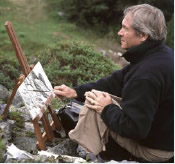 Art and nature have always been a part of Robert Bateman’s life. Growing up in Canada, Robert knew by the time he was twelve that he was going to spend a lot of his life “doing art and a lot of it looking at birds.” Sixty years later, he could not have stated his life’s work any better. After twenty years of teaching art and geography, Robert committed all of his time to painting and environmental conservation.
Art and nature have always been a part of Robert Bateman’s life. Growing up in Canada, Robert knew by the time he was twelve that he was going to spend a lot of his life “doing art and a lot of it looking at birds.” Sixty years later, he could not have stated his life’s work any better. After twenty years of teaching art and geography, Robert committed all of his time to painting and environmental conservation.
To gain a better understanding of the world he was painting, he has traveled to remote areas of the planet. The respect and admiration he gained for the natural world is reflected in his art. “I want to soak it up, to understand it as well as I can, and to absorb it,” he says. “And then I’d like to put it together and express it in my painting. This is the way I want to dedicate my life.”
And dedicate his life he did. Robert Bateman continues to devote his life to art and preservation. As an active member of naturalist and conservation organizations, he has become the spokesman for many environmental issues. He even uses his artwork to help raise millions of dollars for the causes he believes in.
NOAA Southwest Marine Fisheries Division
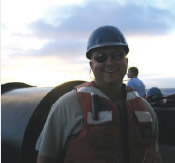 Scott Mau uses remote controlled robots to count fish. These special robots, or remotely operated vehicles (ROV s), act as Scott’s eyes underwater. They give him all the time he needs to count the different species within a habitat, and to determine if the numbers of animals are increasing or decreasing. The combined use of technology and biology allows Scott and others in his field to help save endangered species by maintaining sustainable fisheries.
Scott Mau uses remote controlled robots to count fish. These special robots, or remotely operated vehicles (ROV s), act as Scott’s eyes underwater. They give him all the time he needs to count the different species within a habitat, and to determine if the numbers of animals are increasing or decreasing. The combined use of technology and biology allows Scott and others in his field to help save endangered species by maintaining sustainable fisheries.
Not only does Scott help the planet, he wakes up every morning excited to work… and how can he not? His job combines two of his favorite things, diving and building technological devices. “Kids always ask me how they can get a job like mine. I always tell them, ‘it is not only what you know but who you know’. I recommend that kids get involved in whatever they are interested in – volunteer with many groups and meet people. Let people get to know you.”
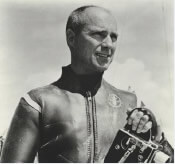 Decades before Survivor captured the interests of television viewers, National Geographic aired a series about an American family in the French Polynesian islands. The special documented Stan Waterman and his family’s year-long adventures as they lived and dived in Tahiti. Though this documentary did not have a million dollar prize at the end of the season like many of today’s reality TV shows, the show was one of the most popular TV hours of the time.
Decades before Survivor captured the interests of television viewers, National Geographic aired a series about an American family in the French Polynesian islands. The special documented Stan Waterman and his family’s year-long adventures as they lived and dived in Tahiti. Though this documentary did not have a million dollar prize at the end of the season like many of today’s reality TV shows, the show was one of the most popular TV hours of the time.
But Stan Waterman is much more than a reality TV star. From the time he left his job as a farmer, Stan pioneered SCUBA diving in the state of Maine, set up the first diving facilities in the Bahamas, lectured to audiences across the continent, documented diving expeditions and turned the experiences into films, and shot several underwater productions for major television networks like ABC and ESPN winning him five Emmy Awards.
“By taking that chance, leaving my farm life and going into the sea, I propelled myself into a lifetime of splendid adventure and activity that still continues today,” Stan reflects of his work. His love for the ocean inspired people to venture into it as well. “By doing so they will certainly have experienced the exciting magic and beauty of the marine environment, as well as its fragility,” Stan says. He believes that by experiencing the wonder of the oceans people will come together to conserve our endangered waters. Stan continues his efforts to make the oceans a reality to everyone by hosting dive excursions throughout the world.
Baja Expeditions in Baja California, Mexico
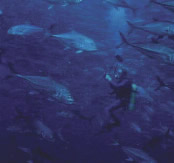 The Sea of Cortez has been described as an ocean oasis, a fertile undersea habitat and home to the world’s rarest marine animals. While onshore, temperatures soar to 120 degrees, high winds scrape the landscape, and black volcanic rocks point to the region’s violent creation.
The Sea of Cortez has been described as an ocean oasis, a fertile undersea habitat and home to the world’s rarest marine animals. While onshore, temperatures soar to 120 degrees, high winds scrape the landscape, and black volcanic rocks point to the region’s violent creation.
For Tim Means it’s a playground.
As founder and president of Baja Expeditions, Tim takes people on expeditions through sand dunes, open water, rugged islands, coral reefs, and deserts. An average day might include a visit with whale sharks, humpback whales, or a tuna farm. These “catered camping trips,” as Tim refers to them, focus on ecology, education, and preservation. “It opens people’s eyes to what is really important. It allows people to sit aside and think about what they need to do back at home – like stoop over and pick up trash, the little things that make a big difference,” Tim says. Sometimes Tim even asks people to pick-up a littered piece of trash to get back on the boat!
Tim says there’s only way one to get a job like his: “Get started now. Camp, enjoy nature, and take your friends with you. Be involved as much as possible. You can do it on your own, without any help from anybody else. You just need to get started.”
Mafia Island Marine Park, Tanzania
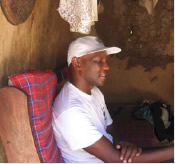 Thomas Chale knows some fisherman in his country will do anything to make a living – even using dynamite to catch fish. But if these people found a better way to make money, they might put harmful environmental practices behind them. As an Enterprise Development Coordinator, Thomas discovered he could help fisherman around Mafia Island Marine Park save enough money to do just that. “When I joined the team here, the park was still riddled with destructive resource use, such as dynamite fishing and seine netting,” says Thomas, who plans and implements a micro-credit program with the WWF (formerly known as the World Wildlife Fund). “Seine netting is an easy and effective way of fishing, but it’s also destructive and takes everything, as mesh is small.”
Thomas Chale knows some fisherman in his country will do anything to make a living – even using dynamite to catch fish. But if these people found a better way to make money, they might put harmful environmental practices behind them. As an Enterprise Development Coordinator, Thomas discovered he could help fisherman around Mafia Island Marine Park save enough money to do just that. “When I joined the team here, the park was still riddled with destructive resource use, such as dynamite fishing and seine netting,” says Thomas, who plans and implements a micro-credit program with the WWF (formerly known as the World Wildlife Fund). “Seine netting is an easy and effective way of fishing, but it’s also destructive and takes everything, as mesh is small.”
Thomas is excited to see that his work with the program and the people of Mafia Island has had such an impact. “This is creating a favorable climate for small businesses and led fishers and their wives to test ways of living other than fishing,” he says. “For example, one woman whose husband handed in his seine nets has bought a TV set and a satellite dish and now has the only cinema on Chole Island, earning about six US dollars per evening.”
Center for Shark Research at the Mote Marine Laboratory in Sarasota, FL.
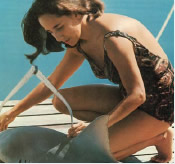 After 71 deep submersible dives, more than six decades of research, three books, and one close encounter with a giant crab, Eugenie Clark has truly earned her world-renowned reputation as the leading authority in shark research. As an ichthyologist, Dr. Clark studies all aspects of fish, both in the laboratory and underwater. Her favorite subject: sharks. Her expertise on these commonly feared creatures has landed her the nickname of Shark Lady. “I have always been too intrigued and awed by sharks to be scared of them,” Dr. Clark says.
After 71 deep submersible dives, more than six decades of research, three books, and one close encounter with a giant crab, Eugenie Clark has truly earned her world-renowned reputation as the leading authority in shark research. As an ichthyologist, Dr. Clark studies all aspects of fish, both in the laboratory and underwater. Her favorite subject: sharks. Her expertise on these commonly feared creatures has landed her the nickname of Shark Lady. “I have always been too intrigued and awed by sharks to be scared of them,” Dr. Clark says.
In fact, the Shark Lady has had the opportunity dive with sharks all over the world. Her favorite dive spots are the Red Sea, Papua New Guinea, and the Australian Coast. But her dive trips are not just a tropical vacation. In 1996 while diving in Taiwan, Dr. Clark made an exciting discovery when a female whale shark was caught with 300 embryos inside. Discoveries such as this have contributed much of what we know about shark anatomy, physiology, and behavior.
Lyden, Washington
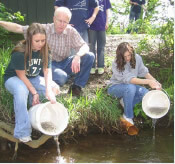 Follow the 8 miles of Fishtrap Creek’s winding waters and you will find yourself in Mr. Kredit’s classroom. “A major emphasis of my teaching has always been to use the outdoors as a significant part of my classroom,” Harlan Kredit says, who teaches high school science at Lynden Christian School in Washington. Look around this open-air classroom and you will witness 25 years of Mr. Kredit’s commitment to both environmental education and the restoration the habitat’s salmon run.
Follow the 8 miles of Fishtrap Creek’s winding waters and you will find yourself in Mr. Kredit’s classroom. “A major emphasis of my teaching has always been to use the outdoors as a significant part of my classroom,” Harlan Kredit says, who teaches high school science at Lynden Christian School in Washington. Look around this open-air classroom and you will witness 25 years of Mr. Kredit’s commitment to both environmental education and the restoration the habitat’s salmon run.
As a kid, Harlan would look out at the stream swarming with salmon but as he got older and the number of fish started to dwindle, he realized that action had to be taken. Knowing that 2 heads were better than 1, Mr. Kredit figured that 2,000 students could make more of a difference than he could alone. “I am determined to get Fishtrap Creek back to the way it was and collectively make a difference,” Harlan says. Each year, Mr. Kredit teaches his students about biology and the environment by working on the Salmon Restoration Project with various local, state, and national organizations. “Every year we focus on a new aspect of the project,” Mr. Kredit explains. Projects range from water quality testing to planting trees and shrubs to labeling storm drains (14,000 to be exact). In addition, Mr. Kredit’s classes raise and release 50,000 coho salmon into the stream annually.
With 44 years of teaching behind his belt, Mr. Kredit knows just what it takes to get his student’s involved – a reason. His passion for the salmon of Washington’s river system inspire his students to get “get down and get dirty” and become stewards for the planet. “There aren’t many excuses for not getting involved,” Mr. Kredit tells his students. “You may not be able to fix the whole problem but you can fix part of it.”
Fire Department in Southern California
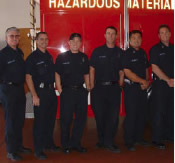 Over 500,000 commonly used products known as hazardous materials pose environmental or health hazards. These substances, which are often used in agriculture, medicine, research, and your own home, pose no threat to people or the environment if they are properly stored, contained, handled and transported. However, accidents do happen. Tanker trucks get in collisions spilling contaminated waste into storm drains; containers leak pollutants into stream channels; fires can release toxic gas into the air.
Over 500,000 commonly used products known as hazardous materials pose environmental or health hazards. These substances, which are often used in agriculture, medicine, research, and your own home, pose no threat to people or the environment if they are properly stored, contained, handled and transported. However, accidents do happen. Tanker trucks get in collisions spilling contaminated waste into storm drains; containers leak pollutants into stream channels; fires can release toxic gas into the air.
Should an incident like this occur, Kris Concepcion and his Hazardous Materials Response Team are the first people on the scene. As their mission statement proclaims, their job within the fire department is to respond to the chemicals that have been released or spilled “to protect life, the environment, and property.” These experts work with various local, state, and national organizations to help achieve this goal.
For these men, a sense of camaraderie and adventure are the motivation for their commitment to saving people and the planet we live on. “I love the variety of what we do,” Ralph Bates says. “When the day begins I never know if I will be working at the desk, fighting a wild land fire, combating a HAZMAT incident, or responding to a heart attack.” Kris Concepcion, Battalion Chief at the station, emphasizes the importance of a well-rounded education to prepare for all that you will encounter in this line of work. “And don’t play with matches,” Kris joked in conclusion.
lower Garden Banks National Marine Sanctuary
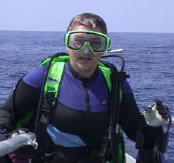 Located in the Gulf of Mexico 110 miles south of the Texas/Louisiana border, the Flower Garden Banks National Marine Sanctuary is home to the northernmost coral reefs in the continental United States. Because the coral reefs are so far off the coast, few people have the privilege of visiting them. They are so remote that scientists didn’t even know they existed until the 1960s.
Located in the Gulf of Mexico 110 miles south of the Texas/Louisiana border, the Flower Garden Banks National Marine Sanctuary is home to the northernmost coral reefs in the continental United States. Because the coral reefs are so far off the coast, few people have the privilege of visiting them. They are so remote that scientists didn’t even know they existed until the 1960s.
It’s awfully hard to care about something you’ve never seen or heard of. As Wyland always says, “If people see the beauty in nature, they will preserve it.” Because people do not have the ability to see the Flower Garden Banks, it is Kelly Drinnen’s job as Education Specialist to make sure that people know about the beauty of this natural wonder and how our actions affect habitats that we can’t even see. In order to accomplish this, Kelly conducts teacher workshops and exhibits at public events, presents to clubs and school groups, develops activities, collaborates with zoos and aquariums, distributes information and ideas through the web, and does just about anything else to share the news.
“Many people think seeing is believing,” Kelly says. “But don’t disregard things you can’t see. It doesn’t mean they aren’t there.”
Birch Aquarium at Scripps in La Jolla, CA
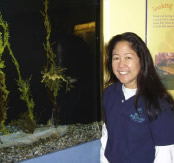 The ocean is full of natural mechanisms that help preserve its habitats and the life within. Many of these natural methods such as currents, direct heat from the sun, and certain types of plants and animals are not available to fish living in aquariums. Because of this, aquariums hire people like Leslee Matsushige to take care of their live exhibits. As Senior Aquarist at the Birch Aquarium, Leslee’s highest priority is the care of the fish. “This includes feeding them, cleaning their habitat, and a lot of general observation,” Leslee explains.
The ocean is full of natural mechanisms that help preserve its habitats and the life within. Many of these natural methods such as currents, direct heat from the sun, and certain types of plants and animals are not available to fish living in aquariums. Because of this, aquariums hire people like Leslee Matsushige to take care of their live exhibits. As Senior Aquarist at the Birch Aquarium, Leslee’s highest priority is the care of the fish. “This includes feeding them, cleaning their habitat, and a lot of general observation,” Leslee explains.
Sometimes taking care of these creatures includes finding them companions. This can be done in two ways. “We usually collect the species right off the coast, in the kelp beds or in the submarine canyons,” Leslee says although she has ventured as far as Mexico, Northern California, and Washington to collect certain fish for particular exhibits. “I also do a lot of research and work with raising certain species like sea horses and coral. We are actually able to produce them in our aquarium so we do not need to take them from the wild.”
Taking care of the fish also includes educating the public about them. “I give tours and presentations that teach our visitors about our aquarium and the life within it. I get satisfaction when people see, learn, and get excited about animals because of the work I have done. It makes all the routine dirty work worth while.”
Natural Resources Defense Council, Riverkeeper, Waterkeeper Alliance
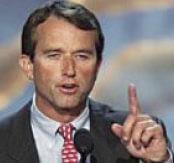 As the nephew of President Kennedy and the son of a United States Senator, he could have done many things with his life. But for Robert Kennedy, Jr., his calling is to help lead the fight for the environment and everyone’s right to clean water. By taking on big corporate polluters and holding them accountable for their actions, Mr. Kennedy uses the law to defend the planet.
As the nephew of President Kennedy and the son of a United States Senator, he could have done many things with his life. But for Robert Kennedy, Jr., his calling is to help lead the fight for the environment and everyone’s right to clean water. By taking on big corporate polluters and holding them accountable for their actions, Mr. Kennedy uses the law to defend the planet.
In his position as senior attorney and national spokesman for the Natural Resources Defense Council, Mr. Kennedy works for one client and one client only, the Earth. He also serves as Chief Prosecuting Attorney for the Hudson Riverkeeper and as President of the Waterkeeper Alliance, a coalition of more than 100 environmental groups working to protect waterways in North America. And if that didn’t keep him busy enough, he is also a Clinical Professor and Supervising Attorney at the Pace Environmental Litigation Clinic where he teaches law students to use their skills to address the impact of human activities on the environment.
Though beach clean-ups and saving water are necessary to preserve the environment, Robert Kennedy, Jr. urges us to go beyond our day-to-day efforts. “The most important thing you can do is participate in the political process,” Mr. Kennedy says. “Support the environmental groups that wage legal action. It’s more important than recycling. It’s more important than anything you can do.” We can change our own bad habits, but politicians and laws can help ensure that others to do the same.
